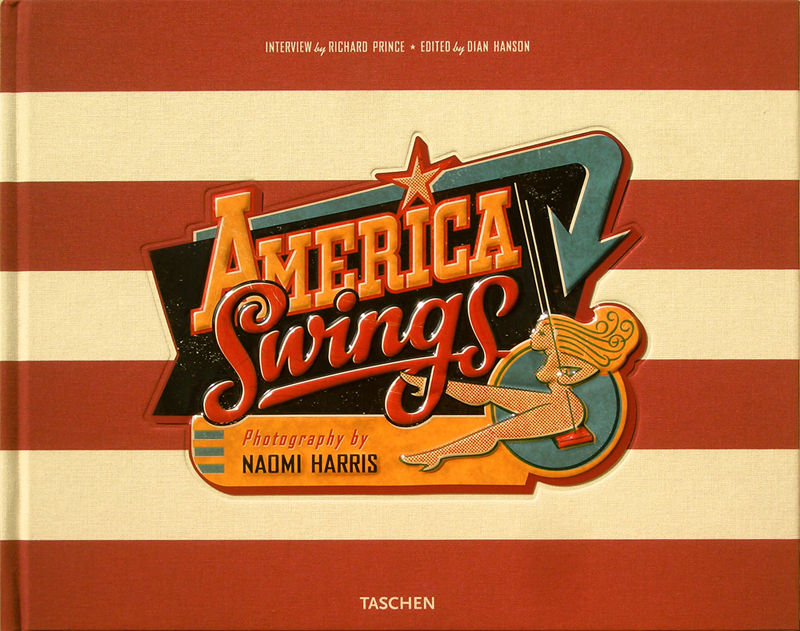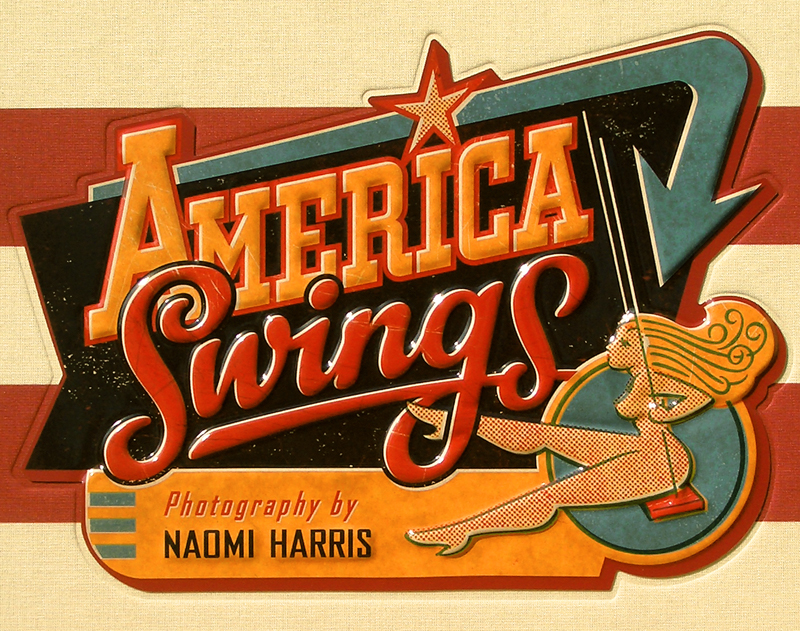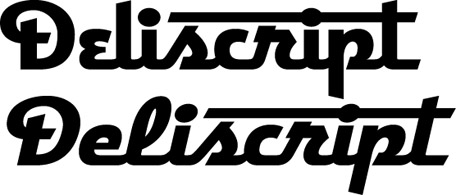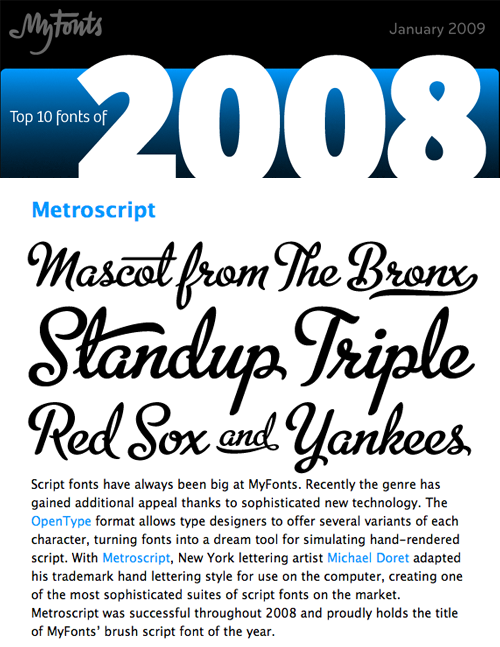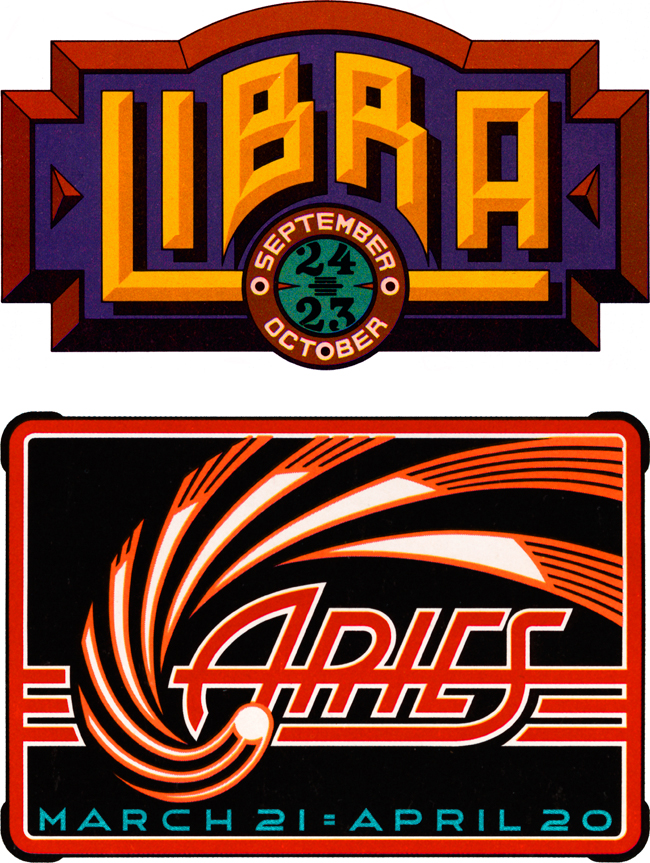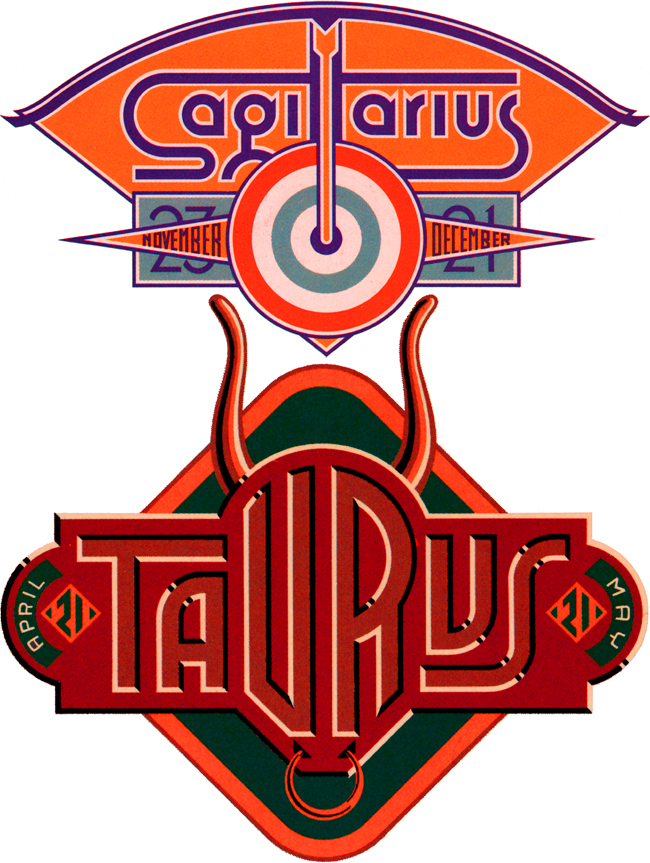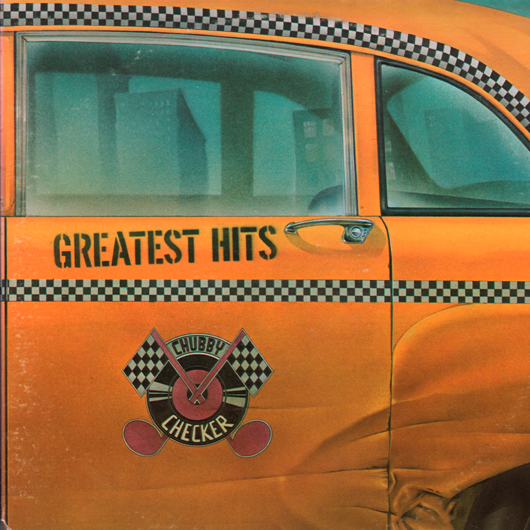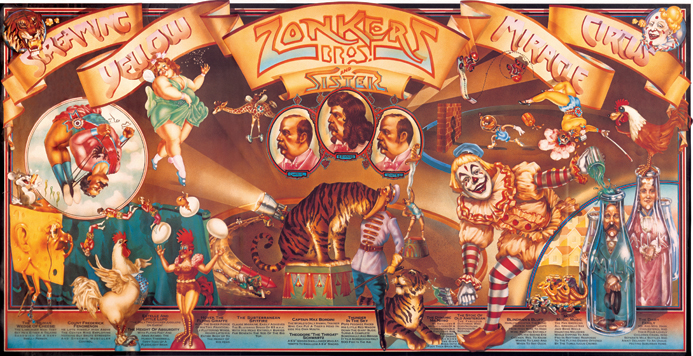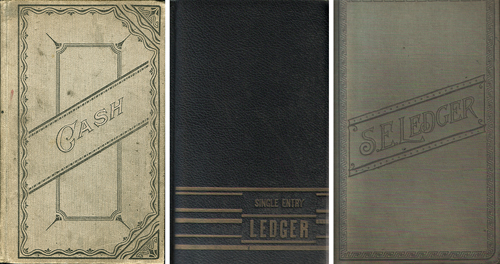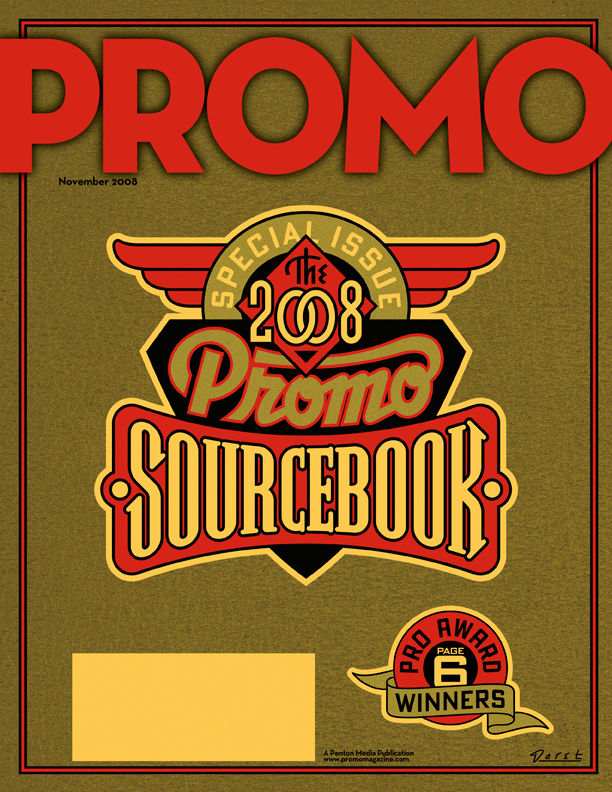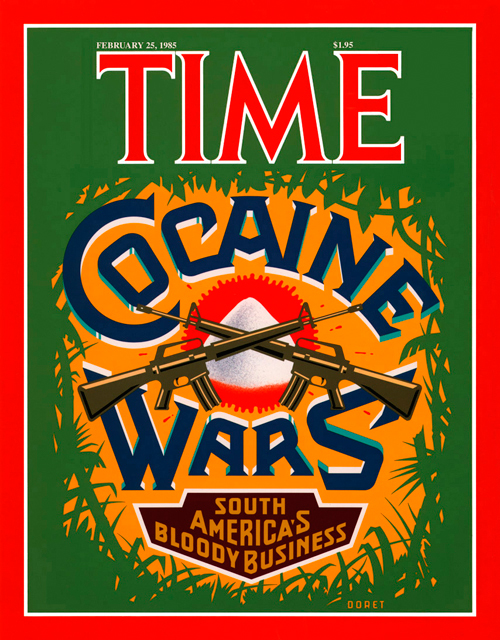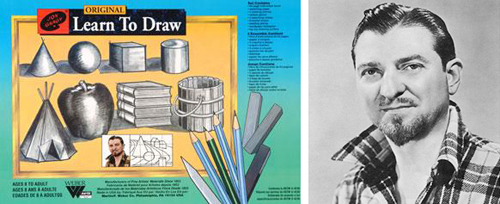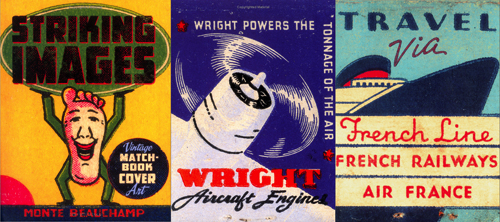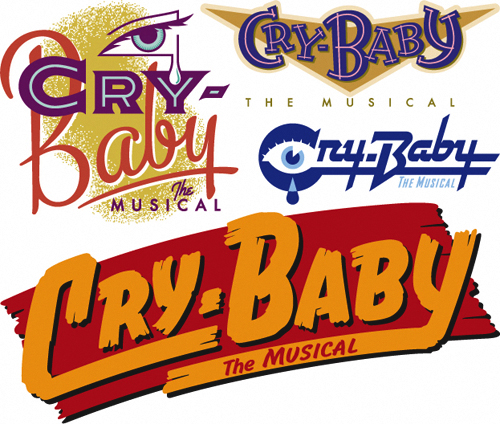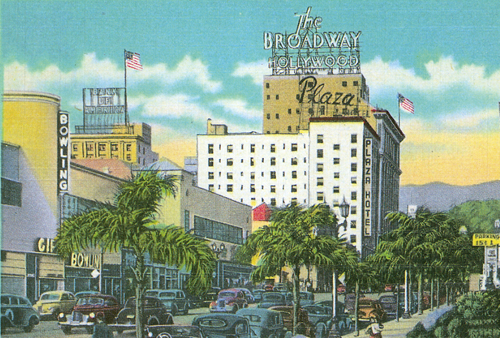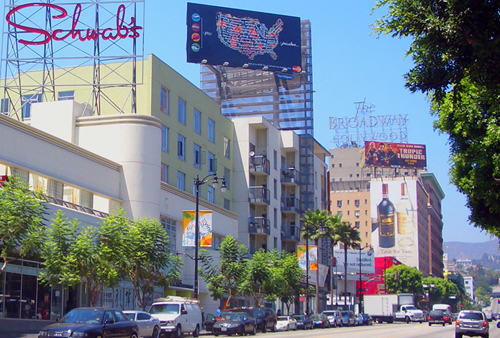In addition to being named "MyFonts’ Brush Script Font of the Year" and before that being named as a "Rising Star", Metroscript has now been named as #5 in Smashing Magazine's "30 Brilliant Typefaces For Corporate Design"—which they call "a great reference for professional designers looking for some fresh, beautiful typefaces for their corporate projects." They go on to say "With Metroscript, ...lettering artist Michael Doret has adapted his trademark hand-lettering style to the computer, creating one of the most sophisticated suites of script fonts on the market."
...and coming soon to a type distributor near you: Alphabet Soup's newest release—Deliscript! Over six months in the making, this font is in the final stages of its OpenType encoding (which has been entrusted to master fontmeister Patrick Griffin of Canada Type). Done in the same spirit as Metroscript, and unlike many "vintage" fonts currently in release, this is not a rehash of an historic font design or showcard lettering that had been unearthed, but a completely new creation. It does have something of the look and feel of a vintage style, but is also fresh and contemporary. Check back here soon for more info, and for the release announcement!



